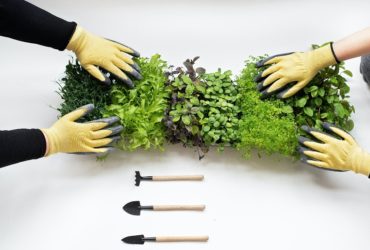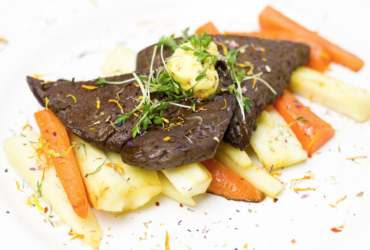My Experience as a Quality Assurance Intern
By: Chloe Calhoun
This past summer I worked as a quality assurance intern for a company that produces cheese, and it has been the most impactful experience in my food science career thus far. Like most quality assurance internships, this took place in a production plant. While many people shy away from working in production plants, I believe this is an experience every student should have to fully understand where our food comes from and the people that are needed to produce it.
The environment in a production plant differs from corporate or office settings in various ways. I now have a great appreciation for the employees in manufacturing who deal with varied temperatures in their work environment, extra hours when things do not go as planned, and especially those working in sanitation to assure the processing lines are clean and safe to operate. Some of my highest value interactions came from time spent interacting with the employees in production. Observing their skill in cheese processing and having the ability to ask questions about how or why something is done was incredibly helpful for understanding the big picture of manufacturing. This interaction gave me insights to apply to my quality assurance role and helped to build a relationship with the employees. They also served as valuable resources through the rest of the summer as I was 16 hours away from home and needed ideas for activities outside of work.
Despite what I may have made it sound like so far, working in a production plant is not all about the socializing. Most of my time was spent completing my weekly tasks and projects. Examples of tasks that were assigned included testing the water supplies for microbes, checking the thermometers for accuracy, finding all the glass and plastics in the plant, and testing the air quality. My main project during the summer was lowering the high Enterobacteriaceae counts that were taken from Good Manufacturing Practices (GMP) swabs. The swabs were taken from shoes, hands, gloves, tools, and toolboxes; all of which were on the production floors. This project sounded daunting and overwhelming at first but became easier after I worked through each step.
This project was the focus of my final presentation at the end of my internship. The final presentation consisted of the tasks and projects completed during my internship and how this internship will help me in the future. This was one of my favorite parts of the internship since I was able to confidently talk about what I spent ten weeks working on. The final presentation was given in front of the supervisors and managers of the plant. The heads of quality assurance and microbiology for the company also joined my presentation from the corporate office via video call. Some challenging questions were asked after my presentation, but I was able to work through them with some assistance from my supervisor.
I believe the key to obtaining internship experiences like this is in the application and interviewing process. Applications for food science internships started opening in September and the majority were posted by November. This seemed super early, but I found that it is important to start applying early in order to secure a desired internship. I found internships to apply for through my university’s career page and by doing a web search for food science internships. Internships in this field were not difficult to come across. The application process tended to be lengthy. Having an up-to date resume on hand was a huge help because I was able to copy and paste most of the information from it into my application. The length of time between when the application was submitted and when the company reached out varied greatly. I had companies reach out the day after and some a month after. No set timeline existed for that. Once I did hear back from companies, I set up an interview with their HR department. This interview generally took 15 minutes and was asking me basic questions about my schooling and activities. If that interview went well, HR reached back out and scheduled an interview with the department I wanted to internship in. This interview typically contained more than one person and was anywhere between 30-45 minutes. The questions were more in-depth and related to food science. After I had wrapped up my interviews, most companies told me that I would hear back from them within two weeks. After I had received a few offers, and a few rejections, I weighed the pros and cons and ended up selecting the internship I described above. This application and interview process is what led me to receive offers for multiple internships and helped me gain the most impactful food science experience I have had yet.
Featured Image: https://www.pexels.com/photo/close-up-photography-of-cheese-773253/
 About the Author:
About the Author:
Chloe Calhoun
I am Chloe Calhoun, a food science undergraduate at the University of Nebraska. I am passionate about food science and have an interest in food microbiology. I currently serve as the IFTSA VP of Digital and Social Media. In my free time I enjoy working out, baking, and any outdoor activity.






Leave a Reply